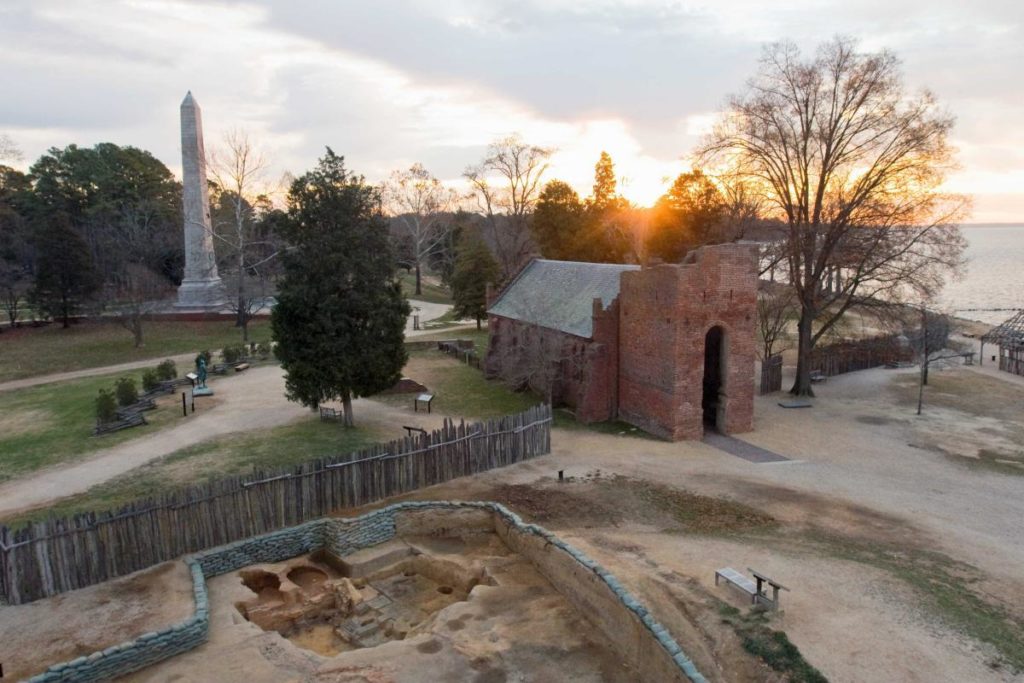Jamestown, Virginia—a cornerstone of pre-colonial and colonial history—is one of the most endangered historic sites in the nation, thanks to sea level rise and storm threats.
Each year the National Trust for Historic Preservation picks 11 American historic sites that need saving the most. Some are threatened by disrepair and neglect, vandalism, or in the case of Jamestown, sea level rise, storms, and recurrent flooding.
On the 2022 list of America’s 11 Most Endangered Historic Places, the National Trust writes, “The original site of the first permanent English settlement in North America and the first capital of the Virginia colony … represents the meshing of cultures in North America, from 12,000 years of indigenous history to the arrival of English settlers and the forced migration of enslaved people from Africa.”
Since 1994, Preservation Virginia archaeologists have uncovered about 85 percent of the 17th-century fort at Jamestown, evidence of buildings, and more than 3 million artifacts. The Jamestown Rediscovery Foundation manages operations and the public archaeology program. The foundation is planning engineering solutions to help Jamestown adapt to immediate threats from sea level rise and extreme weather events.

In a call to action, the National Trust says the organization “needs partners and funding to implement additional climate change mitigation plans.”
Preservation Virginia says that models show within the next half-century, much of Jamestown will be underwater, considering the current trajectory of climate change.
Evidence of the threat to Jamestown Island are already seen in 3-foot floods that occur about 5-6 times a year just west of James Fort, and at the southwest portion of Jamestown, where a branch of the Pitch and Tar Swamp is encroaching on the Jamestown Rediscovery Center on three sides.
“Each major weather event increases the likelihood of irreversible damage to Jamestown’s priceless archaeological resources,” Dave Givens, Director of Archaeology, says. “The next five years will be critical. If we miss this window the effort to save the site will become hugely more difficult.”
As one might expect, steps can be taken to ease the worst of climate change impacts, but they come at a steep cost. To learn more about the Jamestown Rediscovery Foundation’s new effort to “Save Jamestown”, visit historicjamestowne.org.
Jamestown stands as the first successful English settlement in North America, developed into the first capital of Virginia, and was the site of many early encounters among the English colonists, native peoples, and enslaved Africans.
-Meg Walburn Viviano




